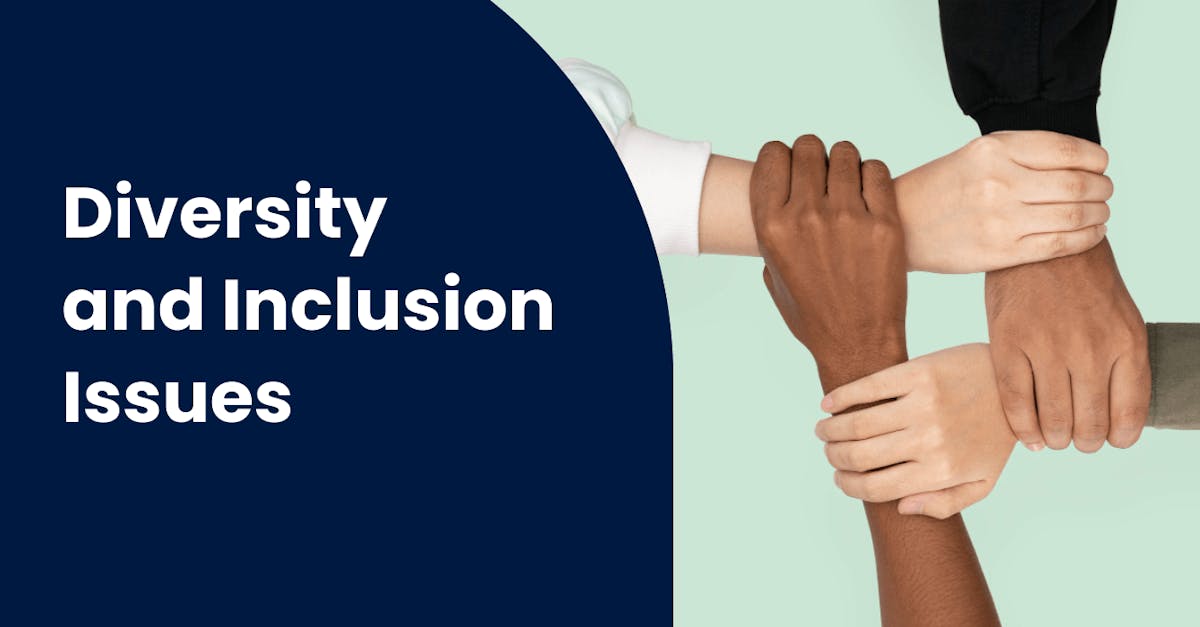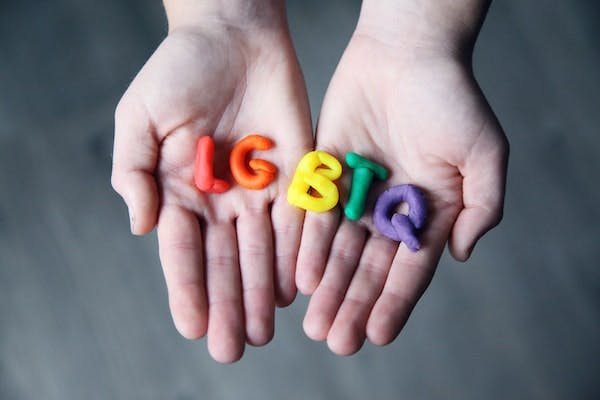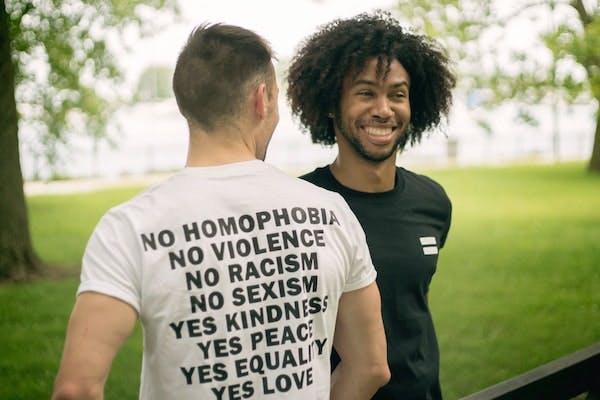10 Diversity and Inclusion Issues

Promoting diversity in a workplace is very rewarding but it also comes with diversity and inclusion issues that can disrupt the smooth functioning of an organization. It’s important to learn how to resolve these issues so that your employees can enjoy the many benefits of a healthy work environment. In this article, we’ll discuss the possible diversity and inclusion issues that a company can come across and the solutions they can adapt to conquer them.
Diversity and Inclusion Issue #1 – Language and Communication
Communication through the same language can bring people together. It’s one of the significant bonds that people share with others but can, unfortunately, also be a cause of exclusion. This person-language bond usually occurs when people speak multiple languages but has a preference for one singular language over the others, which can make others feel excluded.

Even when no prejudice is present among employees, a multilingual workplace can pose certain communication challenges. Employing individuals who don’t speak the predominant language at work may create a communication barrier among team members. It can reduce collaboration and productivity and can lead to other workplace issues. This is why it’s important to have adequate communication training to address this.
If you’re looking for high-quality communication training courses, EdApp is undoubtedly the best option. This all-in-one learning solution has a wide array of courses created by industry experts. Courses, like Teach Yourself Korean, English for Freelancers, and Speaking with Confidence are free (up to 10 users) to take, edit, and customize as you wish using its drag-and-drop authoring tool. They can then be accessed on any device, whether it be a desktop computer, tablet, or smartphone.
Issues: Discrimination against language and communication preference
Solutions: Offer language diversity training, communication training, and language classes
Join for free and check out EdApp’s courses on diversity and inclusion today!
Diversity and Inclusion Issue #2 – Gender and Sexual Orientation
Another common topic when talking about diversity and inclusion is gender and sexual orientation. While times have changed and society has been more accepting of different gender preferences, it’s still one of the biggest reasons for discrimination, which is still happening up to this day.

This unfair treatment can come in different forms, such as name-calling, work discrimination, gender stereotyping, and more. For example, there’s a great disparity between managerial positions given to men vs. women and so women remain underrepresented. The good thing though is that there are government laws and workplace regulations in place to prevent this from occurring and promote gender equality instead. There are also different movements on the rise, such as pushing for equal pay for both men and women and eliminating gendered jobs.
Issues: Discrimination against another gender
Solutions: Offer training programs about gender & sexual orientation awareness and issues, promote women empowerment initiatives, and create policies that discuss sanctions against gender discrimination and harassment
Diversity and Inclusion Issue #3 – Race
This type of diversity and inclusion issue stems from the idea of people that a certain race is superior to the other. This is a product of society and media that, if not careful, will be ingrained in their subconscious. Examples of diversity issues are employees treating other employees with prejudice, and in some worst-case scenarios, some even commit hate crimes.

Unlearning harmful ideas and behaviors is only possible through awareness of the plight of people from different races. Giving your employees training about race and inclusion may open their eyes to the realities of what other people are experiencing.
Check out the different diversity training programs that you can choose from to deploy to your employees.
Issues: Discrimination against race
Solutions: Offer race and ethnicity training programs, orient them about the state laws around hate crimes, and create company-specific diversity policies regarding race
Diversity and Inclusion Issue #4 – Ethnic and Cultural Differences
We live in a vast world and each region is very rich in culture. That’s why in a diverse workplace, we will meet people of different backgrounds and traditions. An individual’s identity is largely reflective of their culture, which is based on a particular group’s accepted values, beliefs, and practices. Not everyone is aware of each individual’s different practices and seeing them for the very first time may draw out different reactions from the employees, may it be pleasant or unpleasant. It’s important to learn how to resolve these issues so that your employees can enjoy the many benefits of a healthy work environment.”

Having differences can lead to hostility in the workplace, especially if not everyone is comfortable with the practices of their fellow employees. To avoid conflicts, the management should foresee and work on the differences and issues of the diverse group. It’s important to introduce cultural diversity training to the employees so that they will understand the cultural differences of each one and how to coexist amidst that. This will allow everyone to understand and accept company policies and compromises surrounding cultural diversity.
You can check out EdApp’s indigenous people and cultural awareness course to help you train your teams.
Issues: Discrimination against cultural differences
Solutions: Offer ethnic and cultural diversity training, introduce events that will showcase the culture of the employees in the company, and create company policies regarding cultural differences
Diversity and Inclusion Issue #5 – Spiritual Beliefs
Everyone has their own spiritual beliefs and whether it’s related to their work ethics, habits, or dress codes, this will most definitely affect their way of life. Having an understanding of the beliefs of your fellow employees is one of the diversity and inclusion examples that makes it easier for everyone to respect each other as an individual because you know where they’re coming from.

Aside from this, it’s also important not to force their beliefs onto another person, especially if they’re not interested. Having your teams attend sensitivity training will immensely improve their relationship with one another. Working on their differences is always encouraged as no one deserves to be discriminated against just because of their spiritual belief.
Issues: Discrimination against different spiritual beliefs
Solutions: Offer employees sensitivity training, give the employees freedom to practice their own religious beliefs openly in the workplace, and create company policies regarding spiritual beliefs
Diversity and Inclusion Issue #6 – Alternative Lifestyles
Another source of diversity and inclusion issues is having alternative lifestyles. An alternative lifestyle deviates from society’s norms and is not part of the mainstream. A common example is an individual’s dietary restrictions, such as being vegan or only eating food that conform to one’s religious beliefs. Other examples can also include, modifying one’s body, deciding not to have children, dumpster diving, and more.

Every individual is unique and everybody has their own story. Learning to accept each other’s differences and preferences starts by knowing where each person is coming from. You can roll out sensitivity training courses for your employees to bring awareness and understanding of each individual’s differences, respond to any adversity caused by it, and gain empathy towards others.
Issues: Discrimination against alternative lifestyles
Solutions: Offer sensitivity training courses that focus on alternative lifestyles, and create acceptable company initiatives that cater to the different lifestyles of the employees
Diversity and Inclusion Issue #7 – Generational Differences
More companies are now hiring young talents in an effort to adapt to globalization. Having diverse age groups in your company means you can capitalize on the different skill sets of both the old and younger generations that can propel your company to success. This is also a good strategy for mentoring younger employees so there will be continuity in the business when the older employees retire.

Generational gaps can bring a lot of issues in the workplace. Different generations like the baby boomers, millennials, and gen z’s have their own work ethics and styles, work-life balance, work speed, and career goals. This can be very tricky when they’re all put in the same team. To ensure smooth collaboration among everyone, the company must examine the gaps and find ways to bridge generational diversity. This can be through training, team-building activities, and some policies that cater to the needs of each age group.
Check out some diversity and inclusion resources you can use for your next diversity programs.
Issues: Discrimination against different age groups or generation
Solutions: Offer generational diversity training, create events that can help the employees develop collaboration and camaraderie, and promote mentor-mentee programs
Diversity and Inclusion Issue #8 – Disabilities
This diversity and inclusion issue is not often talked about but people with disabilities are not given the same opportunities as abled people. It is becoming a problem, this is why there are bills that are pushing for the rights and protections of people with disabilities.

When a workplace hires people with disabilities for an inclusive work environment, it should be with good intentions and not just for show or incentives. Hiring them comes with the responsibility of caring about their well-being, which means that the company should give all necessary support for them to do their jobs properly. This can be through providing ramps for the handicapped workers and specialized equipment or aids for those who need them.
It also helps if other abled employees are given orientations about disabilities for them to be more aware and sensitive of their behavior. Not only that, if they’re working directly with abled people, training about communication and teamwork should also be included so they’ll know how to work effectively with one another given that they have their differences. If not, this will become counterproductive and it may lead to conflict.
Issues: Discrimination against people with disabilities
Solutions: Offer disability awareness training, promote team training that will improve the soft and hard skills of people with disabilities, and create company-specific policies protecting people with disabilities
Diversity and Inclusion Issue #9 – Non-Inclusive Diversity
Diversity and inclusion go hand in hand but it doesn’t mean that diversity always comes with inclusion. The reason why diversity without inclusion defeats the purpose is that it’s merely a case of exclusion. As an example, you can opt to hire employees and independent contractors from different backgrounds, religions, ages, and genders but still cater to a dominant subgroup.

An inclusive culture means that everyone plays their part to ensure that no one is left out or excluded. It’s an organization’s responsibility to create initiatives and see to it that everyone is accepted and involved. Get a pulse on how to make your employees feel included. Cultivate and leverage the differences of your workforce by finding out their strengths and helping them use those to bring out their best at work.
Issues: Diversity without inclusion
Solutions: Hand out surveys that collect the feedback of the employees, create policies and initiatives that dwell on the inclusion of the diverse workforce, and offer training programs that tackle diversity awareness and issues
Diversity and Inclusion Issue #10 – Unconscious Bias
The diversity and inclusion issue of unconscious bias is very broad and it tackles different aspects that lead to discrimination without intentional provocation. One example is appearance discrimination where employees judge and discriminate against those who do not fit in with their preference or even the societal standard of what is deemed acceptable. This includes body shaming, discrimination against one’s fashion sense, hair shaming, and height bias. This sometimes leads to the embarrassment of using products such as minoxidil for women, which is used against hair loss. Due to the use of a seemingly harmless product, one can easily become a victim of shaming these days.

Another example of this diversity and inclusion issue is the discrimination against the artistic expression of a person like having tattoos, piercings, bright color hair dyes, and other body modifications. Employees who fall under those issues experience disrespect, verbal abuse, or even assault to the point that it’s become unbearable for some. The best way to handle this issue is to have an orientation with the entire workforce and educate them about the unconscious bias they might possess and the consequences of misbehavior.
Issues: Discrimination against physical appearance
Solutions: Orientation about natural physical appearances and artistic expression, and create policies that discuss sanctions against appearance discrimination
Author
Erika Operiano
Erika is a learning expert at EdApp, a mobile-first microlearning LMS for everyone's training needs. She also has experience in training & development, project management, and digital marketing. During her free time, she enjoys several hobbies such as watching series, fine arts, music, and some sports.
